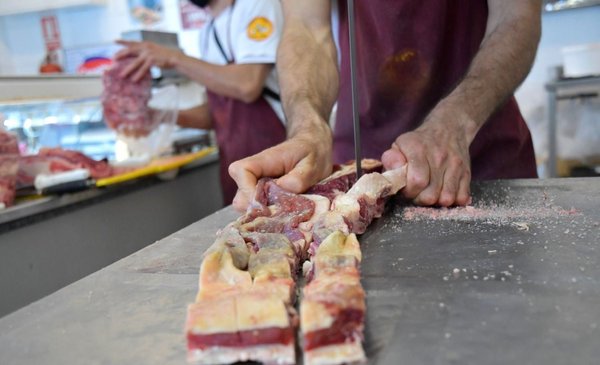The inflation closed 2021 at 7.96% and although it moderated almost 1 and a half points compared to the previous year (9.41%), was for the fourth consecutive year outside the target range defined by the economic team (3% -7%). It was also placed above what was projected by the Ministry of Economy and Finance in the last Accountability Report (6.9%).
The Inflationary dynamics in the year just ended was marked by an atypical context: economic reactivation in a pandemic, wage increases above the Executive Power’s guideline, rises in the international values of food – and oil – that influenced local prices, and a monetary policy of the BCU that began its turn from “Avoid liquidity restrictions” to “achieve the convergence of inflation expectations to the objective”.
Based on the disaggregated data from the Consumer Price Index (CPI) published by the National Institute of Statistics (INE), The Observer He investigated in detail what products are behind inflation and how the different items in the basket were affected.
Meat, the (strong) rise of a sensitive product
Of every $ 100 that the average consumer spends on food in the country, $ 32 is destined to buy meat of some kind. The typical product of the Uruguayan table had a generalized increase of 15% throughout the year, almost double that of the average of the basket of goods and services that the INE reports. The increases suffered by beef cuts last year are linked to the fact that international prices rose, and although this helps the general performance of the economy and the export sector, it has as a secondary effect a transfer of foreign values to the local market.
Fresh beef —which represents more than half of what was spent on meats— had an appreciation of 20%, with the lowest increases recorded for lean minced meat (16.6%), round ribs (16.4%) and buttock (16.2%), while cuts such as skirt (26.6%) and needle (25.4%) became more expensive. The strip roast, reference of the Sunday grill, rose 21.6%, similar to what happened with the rump tail (20.3%).
Unlike what happened with beef cuts, poultry meat – chicken, roughly – barely rose 2.5%. Whole chicken did so by 2.9%, while thighs fell 0.7% and the value of the supreme rose 9.6%.
Other meat products as diverse as milanesas, hamburgers, frankfurters, sausages or fish registered increases of between 9% and 14%. The cooked ham only did it in 5.5%.
Dairy products, flours and infusions
Milk increased 7.3%, yogurt 8.4% and cheeses – generically – 13.4% last year. Within the latter, the one that did it the most was mozzarella, which rose 19.4% and at the other extreme, grated cheese, with 10.6%. On the other hand, eggs were cheaper by 3.4%. 2021 was a year of strong appreciation for dairy products in international markets. Whole milk powder, the main product sold abroad, appreciated 14% last year.
Meanwhile, breads and cereals as a whole became more expensive by 7.6%, in line with the strong appreciation of wheat in international markets. Among the most important increases were those of rice (13.3%), breadcrumbs (12.3%) and alfajores (11%).
On the other hand, soybean oils rose 45.7% and sunflower oils 33.8%. Sugar did the same in 18.4% and other sweet products such as dulce de leche or ice cream, around 8%.
Weed rose considerably less than the general price index in 2021.
For its part, one of the protagonists of the Uruguayan consumption basket, the HerbIt was almost completely saved from inflation and only varied by 1.3%. On the other hand, its competitors did it to a greater extent: tea rose 6.9%, while instant coffee 7% and filter coffee did 7% and 15.6%, respectively.
Fresh fruits, legumes and vegetables
Fruits fell 19.8% cheaper in total during 2021. The drastic decline was led by sales in oranges (27.6%), mandarins (25.1%) and apples (38.2%).
Fresh legumes and vegetables, however, experienced a 7.6% growth in value. The changes were led by increases in zucchini (23.5%), tomato (19.8%) and lettuce (11.3%), at the same time that the volatile price dynamics usually observed in these products determined strong reductions in squash (18%) and tubers such as potato (31.9%) and sweet potato (39%).
Alcoholic beverages and tobacco
The category formed by alcoholic beverages and tobacco – it accounts for 4.3% of Uruguayan spending – became more expensive by 9.3% in 2021. The increase in the value of these products was not marked by great ups and downs. The most stable prices were those of beer (7.7%) and those with the most marked rise were those of wine (10.5%). Tobacco, for its part, appreciated 9.3%.
Increases seen by item
The greatest weight in the Uruguayan consumption basket is held by the category of food and non-alcoholic beverages, which increased 6.5% overall. This class of products is the one that most affects lower-income families, and although its growth was below general inflation (7.96%), it was also slightly above the growth of wages registered by the INE until November (6.02%).
Likewise, it should be noted that it was recently decreed an increase in the national minimum wage of 8% for this year, in tune with the inflation of 2021. While the employment numbers smile at the government, a recovery of the workers’ purchasing power is still pending. Days ago, Isaac Alfie stated to Radio Carve that with the letters in sight of the reactivation of employment, the real salary “is going to have to start rising.”
In the overall figure for 2021 there was no item that became more expensive than transportation, with an increase in prices of 13.4%. The category suffered particularly from the increase in fuels —of 27% compared to the previous December— as a result of pressures in the international market towards greater demand for oil to drive the world’s economic reactivation. Even so, Ancap has been holding the price of its tariffs below what the import parity prices mark since October, alluding to extraordinary profits from its diesel sales to UTE.
Just as the increases in fuel were concentrated in January and especially in the middle of the year, they also had a strong impact on the December ticket upgrades for interdepartmental, suburban and local transportation (which also went up in April). In turn, the acquisition of vehicles pointed in the same direction and appreciated by 11.6%, with a rise in motorcycles in particular that reached 24.3%.
The item that followed transportation was that of furniture, articles for the home and for the ordinary maintenance of the home, whose prices rose by almost 10%. It did not help that rising international inflation and the rise in the exchange rate in the local market (5.5%) have a special impact on the division, particularly household appliances (which are basically imported). Some notable increases were refrigerators (26%), kitchens (19.8%), washing machines (28.8%) and air conditioning equipment (41.3%).
In contrast, communications were the ones that presented the smallest increases. The prices of the item in real terms have been falling for years and 2021 was no exception. In fact, for this year the Executive Branch chose to keep Antel’s rates frozen for mobile, landline and internet telephony.







